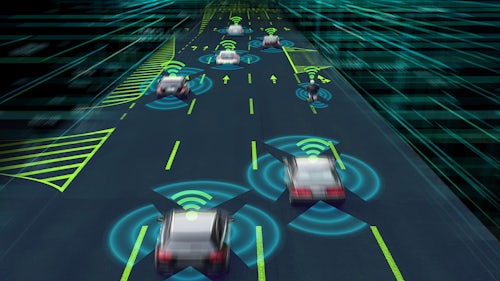Technology used in autonomous cars: sense-think-act hardware validation
Accelerating autonomous vehicle sense-think-act hardware validation has become the sacred grail. Guaranteeing safety-critical functions for self-driving vehicles requires new development paradigms and engineering methodologies.
In this white paper, we discuss the challenges of developing functionality for critical hardware and software and describe the technology components that are required to accomplish that.
- Introducing the sense-think-act model and how to combine specialization in different disciplines to automate performance validation.
- Deploying the right methodologies and achieving the 360-degree vision in any weather and traffic condition using simulation and testing technologies.
- Ensuring safe and secure operation of autonomous vehicle functions though design and real-time validation of E/E architecture, embedded software and controls algorithms.
Accelerate autonomous vehicle functionality-critical hardware validation
Autonomous vehicles will play an essential role in future mobility. Yet even though certain autonomous functions, specifically driver-assist and active safety features, have started to show up in some of the latest cars, taking the next step to fully self-driving cars will be a challenge. We have now arrived at the critical point where the vehicle takes over control from the driver and the software tends to become more important than the mechanics. This has serious implications, not the least of which are the way vehicles are designed. Guaranteeing safety-critical, sense-think-act functions and hardware validation requires new development paradigms and engineering methodologies.
